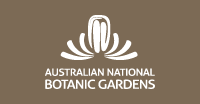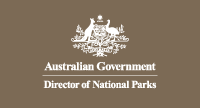The following summary statistics have been compiled to give an indication of the diversity of the Australian vascular flora. The statistics are very much slanted towards the vascular plants rather than the bryophytes, the lichens and the fungi. It is thought that the species richness figures would increase considerably if these groups were to be included.
Also check out the size of Australia compared with the USA , East Asia, and Europe.
Australian Flora estimates 2009 (reference: 9)
Taxon |
World Described |
Australia Described |
Australia Described % of World Described |
Estimate World |
Estimate Australia |
Australia % Endemic |
Bryophytes |
16,236 |
1,847 |
11.4% |
~22,750 |
~2,200 |
25% |
Algae (plants) |
12,272 |
~3,545 |
~29% |
- |
~3,000 |
- |
Total Vascular Plants |
281,621 |
19,324 |
6.9% |
~368,050 |
~21,645 |
91.8% |
Ferns and allies |
(~12,000) |
(498) |
(4.2%) |
(~15,000) |
(~525) |
(33.8%) |
Gymnosperms |
(~1,021) |
(120) |
(11.7%) |
(~1,050) |
(~120) |
(96%) |
Flowering Plants |
(~268,600) |
(18,706) |
(7%) |
(~352,000) |
(~21,000) |
(93.5%) |
TOTAL Plants |
297,857 |
21,171 |
7.1% |
~390,800 |
23,845 |
86% |
Vascular Flora of Australia estimates 1990 (references: 4 + 5)
NOTE: the figures above are the most accurate prediction, these 1990 figures are given for historical context
Total native species estimated in 1990 |
15 638 |
Total naturalised species estimated in 1990 |
1 952 |
Total native and naturalised species estimated in 1990 |
17 590 |
Presumed extinct in 1990 |
83 |
Species of Vascular Flora for each Australian State (1990) (reference: 4 and 7)
| State/Territory | Native species | Naturalised species | Total species described | % of total described flora | % of total land area |
| New South Wales | 4677 | 1253 | 5930 (6363) | 33.7% | 10.46% |
| Northern Territory | 3293 (3604) | 262 (356) | 3555 (3960) | 20.2% | 17.52% |
| Queensland | 7535 (8106) | 1161 (1165) | 8696 (9271) | 49.4% | 22.48% |
| South Australia | 2748 (2850) | 927 (1230) | 3675 (4080) | 20.9% | 12.81% |
| Tasmania | 1627 (1572) | 570 (717) | 2197 (2289) | 13.0% | 0.88% |
| Victoria | 2773 | 820 | 3593 (4000+) | 20.4% | 2.96% |
| Western Australia | 7463 | 853 | 8316 | 47.3% | 32.87% |
| Total Australia | 15638 | 1952 | 17590 | 100% | 100% |
Light green figures in brackets are updates since 1990 as at 1999 by the various State herbaria (reference 7)
Percentage of Total Flora Occurring in Each State (1992) (reference: 4)
| Native | Naturalised | Total | |
New South Wales |
30 % |
64 % |
33 % |
Northern Territory |
21 % |
13 % |
20 % |
Queensland |
48 % |
59 % |
49 % |
South Australia |
18 % |
47 % |
21 % |
Tasmania |
10 % |
29 % |
12 % |
Victoria |
18 % |
42 % |
20 % |
Western Australia |
48 % |
43 % |
47 % |
Largest Plant Families (>300 species) in Australia
1992 [Australian figures refer to native species] (references: 2,
3, 4 + 6)
| genera | species | genera | species | |
Myrtaceae |
70 |
1 646 |
147 |
3 000 |
Poaceae |
151 |
1 062 |
670 |
9 000 |
Fabaceae |
136 |
1 061 |
500 |
12 000 |
Asteraceae |
147 |
940 |
1 100 |
25 000 |
Proteaceae |
45 |
842 |
75 |
1 500 |
Orchidaceae |
90 |
836 |
600 |
30 000 |
Mimosaceae |
17 |
833 |
55 |
3 000 |
Cyperaceae |
47 |
650 |
90 |
4 000 |
Goodeniaceae |
11 |
366 |
17 |
410 |
Rutaceae |
41 |
365 |
150 |
1 800 |
Euphorbiaceae |
53 |
362 |
300 |
5 000 |
Epacridaceae |
28 |
356 |
31 |
426 |
Chenopodiaceae |
31 |
300 |
100 |
1 500 |
Angiosperm families occuring in Australia with more than 50 genera (native + exotic)
estimates 2010 [reference 10] (APC)
Family |
No. genera |
Asteraceae |
309 |
Poaceae |
260 |
Fabaceae |
202 |
Orchidaceae |
133 |
Myrtaceae |
95 |
Malvaceae |
68 |
Lamiaceae |
67 |
Rubiaceae |
64 |
Brassicaceae |
59 |
Cyperaceae |
52 |
Rutaceae |
50 |
Largest Genera (>100 species) in Australia
[native species only] (references: 2 + 3)
| Genus | Number of species | Family |
Acacia |
~1000 |
Mimosaceae |
Eucalypts (Eucalyptus sens lat) |
~850 |
Myrtaceae |
Grevillea |
260 |
Proteaceae |
Melaleuca |
176 |
Myrtaceae |
Leucopogon |
154 |
Epacridaceae |
Stylidium |
154 |
Stylidiaceae |
Goodenia |
140 |
Goodeniaceae |
Hakea |
134 |
Proteaceae |
Eremophila |
134 |
Myoporaceae |
Hibbertia |
126 |
Dilleniaceae |
Pultenaea |
112 |
Fabaceae |
Ptilotus |
100 |
Amaranthaceae |
Present Structural Vegetation Types of Australia (reference: 1)
| Type | Area (sq km) | Percentage |
CLOSED FOREST (>70% foliage cover) |
36 000 |
0.4 % |
OPEN FOREST (30-70% foliage cover) |
359 000 |
4.6 % |
WOODLANDS (10-30% foliage cover) |
1 066 000 |
13.9 % |
OPEN WOODLANDS (<10% foliage cover) |
1 985 000 |
25.8 % |
TALL SHRUBLANDS (shrubs >2m) |
2 392 000 |
31.1 % |
LOW SHRUBLANDS (shrubs <2m) |
484 000 |
6.2 % |
HUMMOCK GRASSLAND |
45 000 |
0.6 % |
TUFTED GRASSES/GRAMINOIDS |
714 000 |
9.2 % |
OTHER HERBACEOUS PLANTS |
495 000 |
6.4 % |
LITTORAL COMPLEX |
22 000 |
0.3 % |
OTHER |
110 000 |
1.5 % |
See profiles of more vegetation types at NLWRA web site
National Reserve System (reference: 11):
The latest NRS figures (June 2010): there are now nearly 9400 protected areas covering 102.5 million hectares (over 13%) of Australia.
Marine protected areas cover nearly 10% of Australia's marine area.
On land, while half of the protected areas are under 100 hectares they only contribute about 0.1% to the overall conservation estate.
The bulk of the NRS, about 82%, comprises 171 reserves larger than 100,000 hectares.
Some very simple maps:
References
(1) Anonymous (1990). Atlas of Australian Resources - Vegetation. AUSLIG, Commonwealth of Australia.
(2) Beadle, N C W (1981). The Vegetation of Australia. Cambridge University Press, Cambridge.
(3) Anonymous (1993). Census of Australian Vascular Plants (CAVP) Computer Database (June 1993). IBIS data network, Australian National Botanic Gardens, Canberra.
(4) Hnatiuk, R J (1990) Census of Australian Vasular Plants. Australian Government Publishing Service, Canberra.
(5) Leigh, J; & Briggs, J (1992) Threatened Australian Plants - Overview and Case Studies. Australian National Parks and Wildlife Service, Canberra.
(6) Morley, B D; & Toelken, H R (1983) Flowering Plants in Australia. Rigby, Adelaide.
(7) Orchard, A.E. (ed) (1999) Flora of Australia Vol 1 Introduction 2nd Edition, Australian Biological Resources Study/CSIRO, Canberra.
(8) Chapman, A.D. (2006) Numbers of Living Species in Australia and the World. Report for the Department of Environment and Heritage, Canberra, Sept 2005. ISBN 978 0 642 56849 6
(9) Chapman, A.D. (2009) Numbers of Living Species in Australia and the World, 2nd ed . Report for the Australian Biological Resources Study, Canberra, Sept 2009. ISBN 978 642 56860 1
[ www.environment.gov.au/biodiversity/abrs/publications/other/species-numbers/2009/ ]
(10) Australian Plant Census - family translation tables data
www.anbg.gov.au/chah/apc/family-translation/brummitt-APC-fam.html
www.anbg.gov.au/chah/apc/family-translation/brummitt-APC-gen.html
![An Australian Government Initiative [logo]](/images/austgovt_brown_90px.gif)







